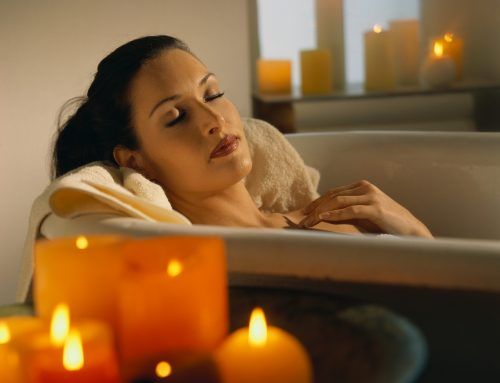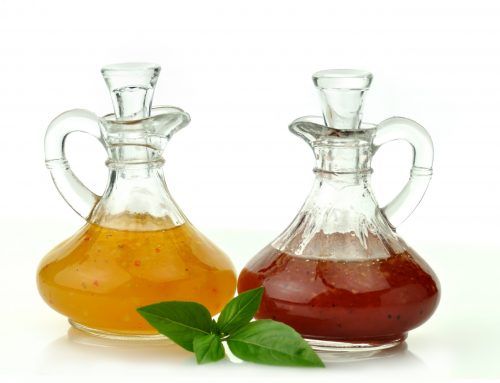“A pan should be just large enough to hold its contents comfortably. Heavy pans heat slowly and cook food at a constant rate. Aluminum and cast iron conduct heat well, but may discolor food containing egg yolks, wine, vinegar or lemon. Enamelware is a fairly poor conductor of heat. Many recipes therefore recommend stainless steel or enameled cast iron, which do not have these faults.”
–Time-Life Editors, Foods of the World, 1970
An underlying truth behind this statement is, “Why bother to forage for the best ingredients, if, at the last minute, you compromise the quality of the final dish by choosing the wrong pot or pan to prepare it in?” But something else it didn’t explicitly state is that acidic foods react with aluminum, and, to a lesser degree, with cast iron. This reaction is common knowledge among professional chefs and why they would never allow a cheap aluminum pan or pot of any kind in their kitchen. It is also why some tomato-based recipes, and those containing other acid foods like vinegar or lemon juice, call for the use of a “non-corrosive” pot or pan in their preparation.
I first started to notice the importance of being vigilant about what foods are prepared in after eating a tomato-based dish at an ethnic restaurant. My stomach churned for a few days and then I got a pain in my lower back—centralized over the kidneys. A savvy alternative practitioner pointed out the possible connection of heavy metal poisoning from eating acid foods like tomatoes that had been cooked in aluminum pots. When I returned to the restaurant, I noticed aluminum pots hanging on hooks above the stove and have never eaten there again. You have probably heard of this principle without knowing it. This is why cans no longer have lead seams and most foods are packaged in steel instead of aluminum. Some food can interiors even have a non-reactive white lining.
Another no-no is Teflon—a short term for tetrafluoride, which in turn is short for polytetrafluoroethylene or PTFE. Yes, that’s right, Teflon is a fluoride product and one that produces a toxic gas when heated to over 500°F. There has been a warning about this on the product box, but most people overlook the missive. But a recent spot of 20/20 highlighted how inhaling the fumes produced when a high-heat pan, such as when one cooks bacon, can cause an illness dubbed the Teflon-flu. It seems the manufacturer Dupont has known about the flu for years, and warns about the flu on their Web site, but not the product container.
Over the years, I have weeded out from my kitchen and replaced any poor-quality and toxic pots and pans, with high-quality stainless steel or enameled cast iron cookware. I highly recommend All-Clad’s beautiful, yet dependable line of high-quality pots and pans for stovetop cooking. If you are throwing out your old collection, why not consider one of their starter sets in their basic Stainless Steel line? There are many offers, but most come with a combination of lidded sauce pans and open frying pans—but do pass up the offers which include non-stick frying pans. If you have a little more money to spend, their Cop-R-Chef line features exquisite copper exteriors and the safe stainless steel interior-cooking surface.
One of my favorite All-Clad pieces is their butter warmer—a little pan just big enough for melting a stick of butter for popcorn. All-Clad is also a good choice for a stock pan. They make several sizes of heavy-bottomed stockpots ranging from 4-20 quarts. Choose one that is at least 16-quarts. That size can hold a couple chickens and all the savory vegetables needed to make a beautiful, nutritious, and versatile stock.
Another indispensable pot in my home is my enameled 5.5-quart Dutch oven with a lid from Le Creuset. This is my choice of pots for slow cooking a roast or stew on the stovetop. I have very fond memories of a friend of mine showing me how to make his favorite recipe—a pork and leek stew—in it just before he passed away. And since it is enamel-lined, it’s okay to cook acid-based foods in it, but always to be sure to use a wooden spoon—as metal can scratch the surface. My Dutch oven is white, but it comes in a wide range of colors–surely one to fit in your kitchen.
Despite the Time/Life Editors admonition against cast iron due to its possibility of reacting with food, I highly recommend some pieces of Lodge cast iron ware—as long as you avoid acidic foods and pre-season the pan as directed by the manufacturer. In fact, a good cast iron frying pan or skillet is a great kitchen tool because it conducts heat so well. I use my 12-inch skillet for frying bacon. Lodge also makes some very nice griddles for making pancakes and tortillas, as well as cornbread pans in fun shapes like perch, cactus, and corncobs.
I occasionally cook with two kinds of glazed earthenware from Bulgaria. The first is a large hand-thrown lidded pot for the oven called a gyuvech. It is used to make a meal of the same name—a rich combination of sausage and vegetables that are slow cooked in the oven. The second is an individual-serving size version of the first called a gyuveche. It is used to make a meal of sausage, peppers, and tomatoes topped at the last minute with an egg.
Porcelain is a good choice for bake ware and German made Villeroy & Boch is top of line. If you only buy one or two pieces, start with Villeroy & Boch’s 10×14-inch lasagna pan, followed by their versatile soufflé/casserole dishes that measure 7¾ inches wide and 3½ inches deep. I use the “lasagna” pans for baking carrot cakes, roasting chickens, and I use the “soufflé” dishes for making rhubarb crunch, sweet potato casserole, Potatoes Dauphinoise and numerous other dishes. Unfortunately, one of my favorite Villeroy & Boch pieces, a wonderful 12-inch quiche pan, has been discontinued. Luckily, I squirreled away four of them–each in a different pattern.
To put farm-fresh eggs and cream to good use, Villeroy & Boch also makes beautiful ramekins for crème brûlée, but I prefer my 5 oz. French made porcelain ramekins from Apilco or Emile Hnery. Williams & Sonoma sells a set of four Apilco ramekins in a gift box, along with a kitchen torch. (Don’t forget a bottle of butane to fuel the torch.) If you want to buy them individually, look for Apilco ramekin #1. You need to be alert when purchasing ramekins because there are quite a few inferior imitations on the market; many of them are made in China. I use my Apilco ramekins for butter, too.
I make one exception to banning aluminum from my kitchen. For baking cookies and drying nuts, I use professional-quality aluminum “half-sheets” by Chicago Metallic or Nordic Ware available through restaurant supply companies, Sur La Table and online (see above)—but I always line the bottom of the pan with parchment paper in order to keep the food from touching the metal. To economize, I buy 1,000 parchment pan liners at a time, which are available from restaurant supply wholesalers. One box usually lasts about four years.
Last, but not least, I cherish my Mauviel Tarte Tatin pan. It has a copper exterior, but a steel-lined interior making it perfect for making a wonderful caramelized French apple dish of the same name. There are several different sizes of Tarte Tatin pans—even by Mauviel. I prefer their 11-inch 2.1 qt. pan that has little “ear” handles to make it easier to maneuver the pan on the stove and in the oven.
So make a New Year’s resolution to cast out the old—your old aluminum and Teflon-lined pots, pans, and bake ware, that is—and then replace them with good-quality stainless steel, enameled or well-seasoned cast iron, and porcelain.
For more information:
For Villeroy & Boch products see, www.villeroy-boch.com
For Lodge products see, www.lodgemfg.com
For All-Clad see, www.allclad.com
For Le Creuset see, www.lecreuset.com
“Can Non-Stick Make You Sick? EPA Studying Whether Teflon Poses Health Risks,” Brian Ross, Rhonda Schwartz and Maddy Sauer reporting, aired November 14, 2003 on ABC News 20/20.




